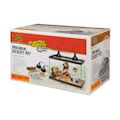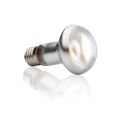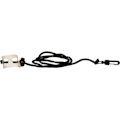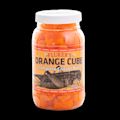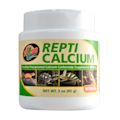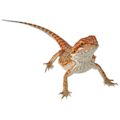Bearded Dragon Shop
Get It Today
Bearded Dragon Supplies
With their uniquely colored scales, interesting mannerisms and relatively long lifespans, the bearded dragon—or Pogona vitticeps—has been one of the most popular pet lizards in the U.S. since the 1990s. Since they hail from the deserts of Australia, pet parents need to effectively recreate their natural climate, which can include plenty of dry heat and logs to climb. At Petco, we offer many of the bearded dragon accessories necessary to keep your pet happy. Read our Bearded Dragon Care Sheet for tips for those who are thinking about bringing home a bearded dragon and some to help even long-time bearded dragon enthusiasts.
FAQs About Bearded Dragon Supplies
The appropriate bearded dragon food can depend on the age of your pet. Younger lizards will likely require a protein-rich diet of mainly live insects—most commonly crickets and dubia roaches, but also including hornworms, grasshoppers and wax worms. The nutrients in these insects can help your bearded dragons mature big and strong.
Adult bearded dragon food can include the insects mentioned above but in smaller quantities. Mature bearded dragons mainly require a diet of leafy greens—including spring greens, kale, watercress and endive. Some vegetables like bell peppers and butternut squash can also make for tasty snacks. Still, it’s recommended to consult a veterinarian or knowledgeable Pet Care Center Associate before feeding your pet something new.
A wholesome mix of live insects and plants can be vital to the health of your bearded dragon. Food rich in protein like insects is the preferred meal of reptiles, but leaving too many insects in your bearded dragon tank will likely cause them to gorge and overeat, which can lead to illness. Additionally, your pet will also require supplements—including Vitamin D, multivitamins and calcium—to help prevent metabolic bone disease and other conditions that can affect bearded dragons. These typically come in powders that can be sprinkled over the contents of their food dish.
It’s recommended that you put food in your bearded dragon habitat once a day. Remember that insects should only account for around 20% of their diet, with leafy greens making up the remainder.
The exception to this is when your pet goes through brumation—a type of hibernation where your bearded dragon will go weeks or even months without eating and sporadically drink water. However, it is still important that they have access to food in their bowl every day. Check out our Bearded Dragon Care Sheet for more information.
There can be varying degrees of cleaning your bearded dragon habitat. Daily maintenance typically includes removing dead insects, uneaten vegetables and feces to ensure that your pet’s environment is free from bacteria. You’ve likely purchased substrate or sand for your bearded dragon, tank accessories like rocks or logs and lamps—these should be spot cleaned daily to help prevent your lizard from becoming ill.
Once a week, pet parents should remove their bearded dragon from the habitat for a more thorough inspection of their living environment. You can sift through their sand for any missed feces, remove and inspect your bearded dragon’s décor, clean their food and water dishes and wipe any visible waste of the glass and covers of their enclosure.
Their habitat will usually require complete disinfection once a month. This will require removing all of your bearded dragon’s accessories and sand—sand should be replaced or rinsed, and décor should be thoroughly disinfected or baked to kill all bacteria. Your aquarium or terrarium should also be disinfected, and Petco carries a selection of cleansers that can help keep your pet’s environment clean without the worry of their reaction to harsh chemicals. Make sure that your habitat is dry and free from odors before returning your bearded dragon and their accessories.

